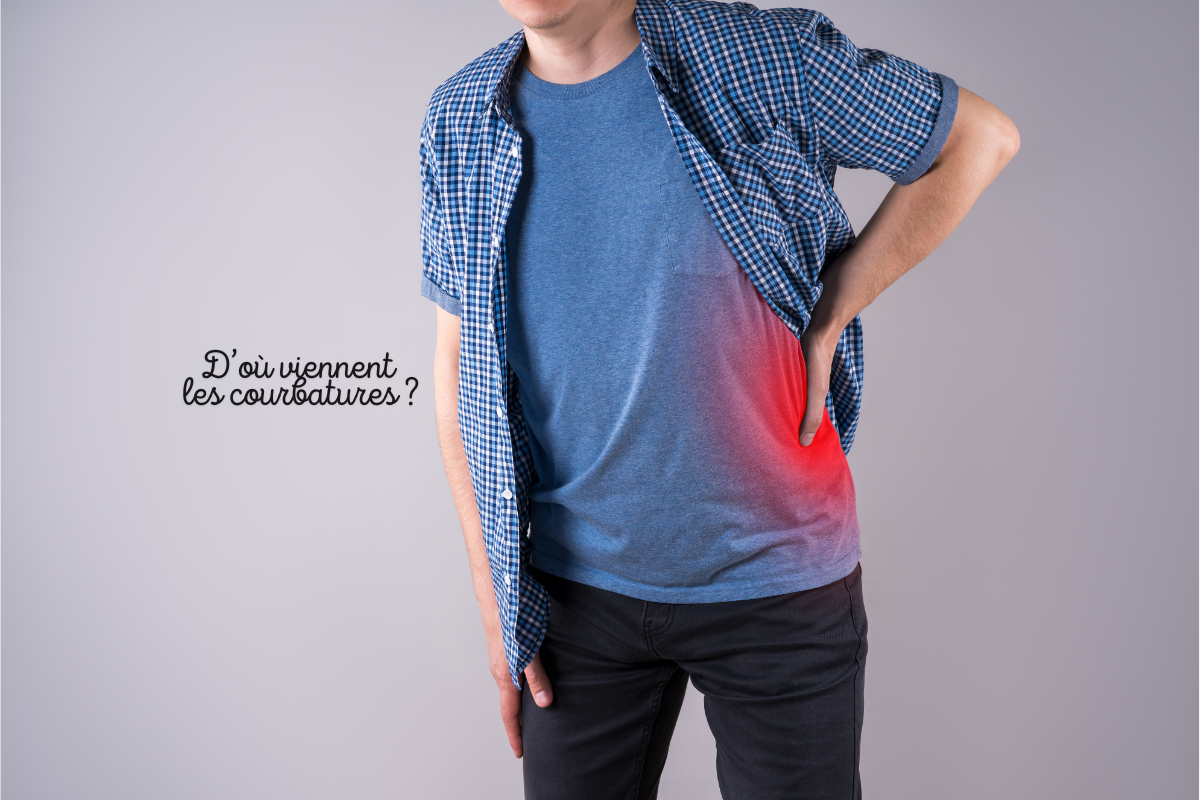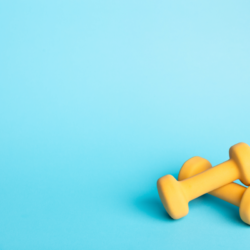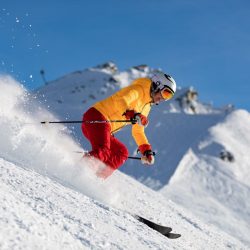Why do we feel sore after physical effort? How do our muscles work and what are the physiological processes that trigger the post-training aches and pains that are so common? Whether you’re an occasional sportsperson or a regular exerciser, it’s common to feel muscle stiffness or a dull ache 24 to 48 hours after intense physical activity. These notorious aches and pains, often wrongly attributed to lactic acid, are actually linked to a complex chain of metabolic reactions and muscular microtrauma.
To fully understand the origin of muscle soreness and how to prevent it or relieve it effectively, it is essential to explore how the muscle functions, the energy production mechanisms (ATP), and the internal factors – hormonal, nervous, nutritional – that influence muscle performance. This article provides a comprehensive overview of the physiological basis of muscle soreness: from its definition to its link with energy metabolism, via muscle structure and the keys to muscle adaptation. It’s useful reading for a better understanding of your body’s reactions after physical effort.
What is the link between metabolism and muscle pain?
Metabolism plays a fundamental role in the way our body reacts to physical effort. When it is put under intense strain, it can generate residues that are responsible for the muscle soreness felt after exercise.
What is the purpose of energy metabolism during exercise?
Energy metabolism is essential for the functioning of the body, providing the energy required for movement, regulation of body temperature and internal metabolic processes. The macronutrients – carbohydrates, fats and proteins – in food serve as sources of energy. Around 60% of this energy is converted into heat to maintain body temperature, while the rest fuels metabolic processes and muscular work.
Adenosine triphosphate (ATP) is the main fuel for muscles, breaking down into adenosine diphosphate (ADP) and a free phosphate during muscle contraction, releasing energy. The ADP is then converted back into ATP, guaranteeing a constant supply of energy. ATP can be resynthesised in different ways, depending on the intensity and duration of the effort.
There are four main types of energy production: creatine kinase, anaerobic glycolysis, aerobic glycolysis and lipolysis. Each uses different sources of energy and depends on the availability of oxygen. Phosphocreatine, a fast source of energy, is used first during physical effort, followed by carbohydrates and lipids.
Anaerobic glycolysis produces energy quickly without oxygen, but generates lactate, which can lead to muscle fatigue. Aerobic glycolysis is slower and uses oxygen to completely break down glucose. Lipolysis aerobically breaks down fats into fatty acids, providing an almost inexhaustible but slow source of energy.
Proteins also serve as a source of energy, especially in cases of deficiency. In sport, the type of energy metabolism varies according to the sport practised and the intensity and duration of the effort. Red muscle fibres are best suited to endurance efforts, while white fibres are optimal for short, powerful movements. Training can influence the composition and performance of muscle fibres.
How does a human muscle work?
Muscle is made up of muscle tissue, connective tissue, blood vessels and nerves. Muscle cells, with their actin and myosin filaments, contract to change the length and shape of the cell, producing strength and movement. They play an essential role in maintaining posture, locomotion and the functioning of internal organs, such as cardiac contraction.
There are three types of muscle tissue, derived from the embryonic mesoderm: skeletal, cardiac and smooth. Skeletal muscles contract voluntarily, while cardiac and smooth muscles are involuntary. Skeletal muscle fibres are divided into fast and slow twitch fibres.
Muscles derive their energy from the oxidation of lipids and carbohydrates in aerobic conditions, and from chemical reactions in anaerobic conditions. These reactions produce adenosine triphosphate (ATP), the energy source for muscle movement.
Types of muscle tissue include skeletal muscle, responsible for voluntary movement, smooth muscle, found in organs, and cardiac muscle, unique to the heart. Striated, skeletal and cardiac muscle contain sarcomeres, key structural units, while smooth muscle does not.
The structure of striated skeletal muscle involves various levels of connective tissue: the epimysium, the perimysium and the endomysium. The muscle fibres, composed of myofibrils, contain sarcomeres, giving the muscles their striated appearance.
In physiology, the sarcomeres of skeletal muscles contract and release rapidly, while smooth muscles sustain slower but continuous contractions.
Muscle function depends on the location and insertions of the muscle. The cross-section determines the force generated, and the myofibrils, chains of sarcomeres, shorten during contraction, changing the length of the muscle fibre.
What are the different types of muscle in the body?
Muscles, which account for 30 to 40% of our body weight, are made up mainly of water (80%), proteins (17%), glycogen, lipids and mineral salts (1% each). They require oxygen and ATP (Adenosine TriPhosphate), generated from dietary carbohydrates, to function efficiently.
We have three types of muscle with different functions:
- Striated skeletal muscles: Responsible for voluntary and reflex movements (walking, lifting a leg, grasping objects, etc.).
- Striated myocardial muscles: Essential for heart function and blood circulation.
- Smooth muscles: Operate autonomously in processes such as breathing, digestion and the functioning of the viscera.
Muscles also play a role in shock protection, physical balance and heat production.
The main properties of muscles include :
- Excitability: Response to stimulation.
- Contractility: Capacity to contract and return to the initial state.
- Tonicity: Strength at rest or during activity.
- Elasticity: Ability to stretch and return to its original shape.
These properties vary according to age, sex, build and level of physical activity.
To maintain good muscular health, regular physical activity and sport are essential, along with a good warm-up before exercise and stretching afterwards. Warming up prepares the body for exercise, improves performance and prevents injury. Stretching after exercise promotes recovery, maintains muscle elasticity and reduces the risk of cramp.
What factors influence muscular performance and muscle soreness?
Metabolic factors play a crucial role in muscle contraction, leading to a reduction in the intramuscular energy load and an increase in the AMP/ATP ratio.AMP kinase (AMPK), a sensor of cellular energy status, influences muscle protein synthesis. Activation of AMPK stimulates the expression of genes linked to muscle adaptation, in particular those encoding mitochondrial proteins. Increased AMPK activity during exercise inhibits protein synthesis by reducing the activity of mTOR, a translation regulator. During recovery, there is a rebound in activity, favouring muscle protein synthesis.
Hypoxic Inducible Factor (HIF) and Vascular Endothelial Growth Factor (VEGF), regulated by muscle hypoxia, also influence muscle development. HIF promotes mitochondrial biogenesis, while VEGF stimulates the development of the capillary network.
Nervous factors include the nervous control of motricity, triggering the entry of calcium into the muscle cell and activating calcineurins. Calcineurins, by activating the transcription factor NFAT, influence the metabolic and structural differentiation of muscles. Myogenins, which regulate gene expression of muscle proteins, play a role in muscle response to training.
Hormones also play a decisive role. Steroid hormones, the somatotropic axis and insulin coordinate the development of muscle mass.IGF-1 stimulates the proliferation of satellite cells, contributing to muscle hypertrophy. Thyroid hormones influence muscle fibre typology.
Finally, nutrition is essential for muscle growth. Adequate protein and calorie intake is necessary. Carbohydrates play a role in protein binding, while insulin has an anabolic effect on muscle proteins. Appropriate nutrition, rich in proteins and carbohydrates, is crucial to optimising the effect of physical training.





